Home Bar Essentials
If you love mixing drinks and making cocktails, then sooner or later you will want a home bar. And when you do, this is my guide to the home bar essentials you will need to make your mixology and entertaining easier and more enjoyable!
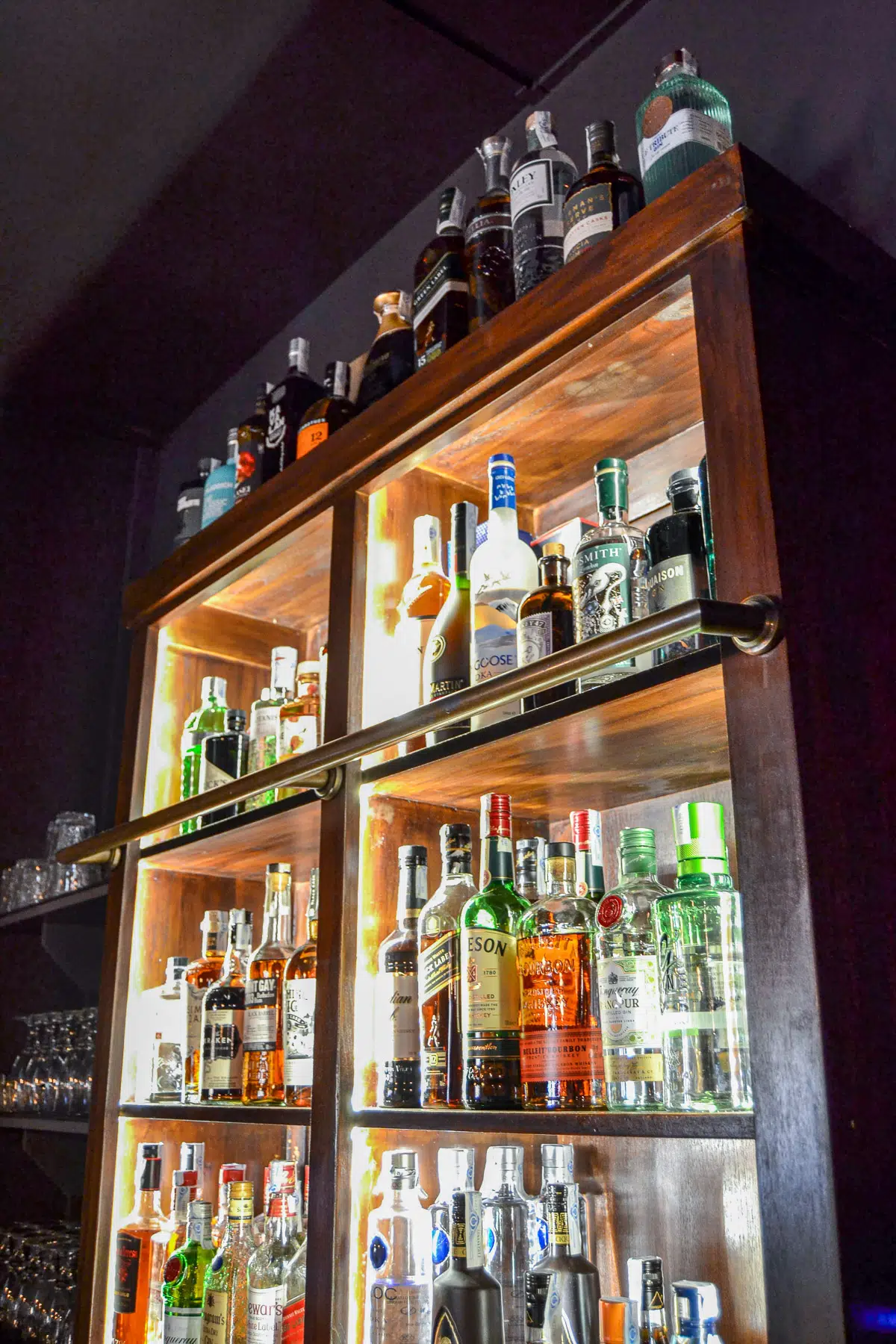
While you won’t need all of these items to start, you will find yourself adding to your collection until you have an assortment that would impress your local bar owner. However, let’s look at the most essential items to help you create that starter list.
This post may contain affiliate links, which means I get a small commission if you click the link and buy something. You can read my disclosure here.
Essential liquors for home bar
There are certain types of liquor, sometimes known as base spirits, that are crucial to have in your collection. The vast majority of cocktails will contain at least one of these, so they are the sensible place to begin your bar essentials list.
Vodka
Vodka is a colorless liquid that began as an Eastern European favorite but has spread around the world. It is usually made with grains or potatoes, and it now ranks as the spirit from which the greatest number of cocktails are made. Vodka today is also available in a wide range of flavors and infusions.
Vodka doesn’t have a strong taste of its own but it packs quite a punch, typically being between 80 to 100 proof with an ABV (alcohol by volume measurement) of 40 to 50 percent.
If you’d like to learn more about vodka, read my complete guide here.

Cocktails made with vodka
- Martini (pictured above)
- Cosmo
- Bloody Mary
- Cherry sour
- Lemon drop
Gin
Gin is a distilled alcohol spirit made primarily with juniper berries to which a variety of different ingredients, known as botanicals, may be added to create each unique flavor. Gin comes in a wide range of styles, such as Navy Strength and London Dry, and is also used as a base to make gin liqueurs and flavored gins.
In terms of strength, gin must start at 40% percent or 80 proof but some types can be much higher. Navy Strength is typically the strongest type of gin.
If you’d like to learn more about gin, read my complete guide here.
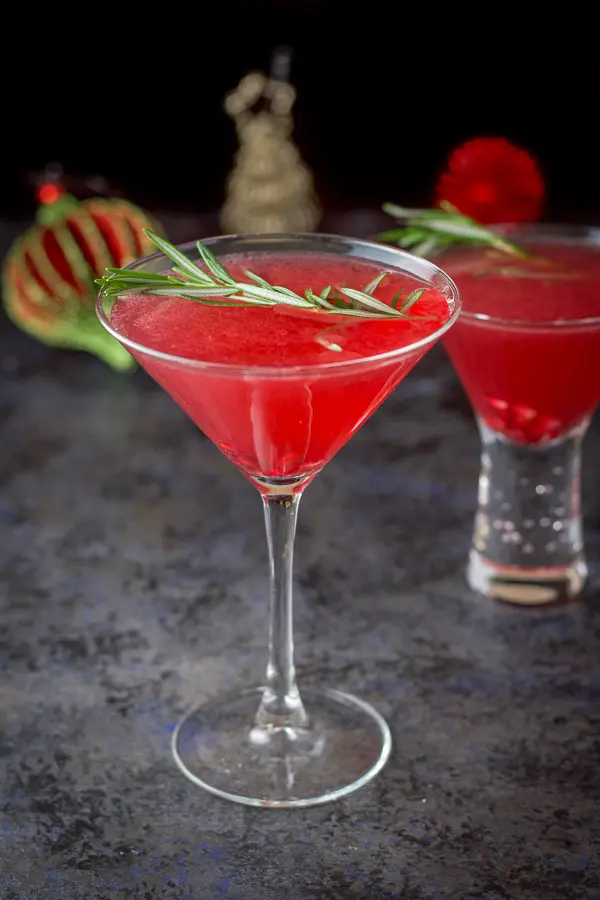
Cocktails made with gin
- Pomegranate (pictured above)
- Gimlet
- Lime rickey
- Gin & tonic
Rum
Rum is made from fermenting then distilling sugarcane molasses (sugarcane juice) to create a clear liquid that is aged in oak barrels. Many rums come from the Caribbean but production has spread around the world.
Light rums, such as Bacardi, are most commonly found in cocktails, while golden and dark rums can be found in cocktails or served straight up or on the rocks. Rums have an ABV of 36-50%, which is 72-100 proof. There are also now flavored and spiced rums available.
If you’d like to learn more about rum, read my complete guide here.
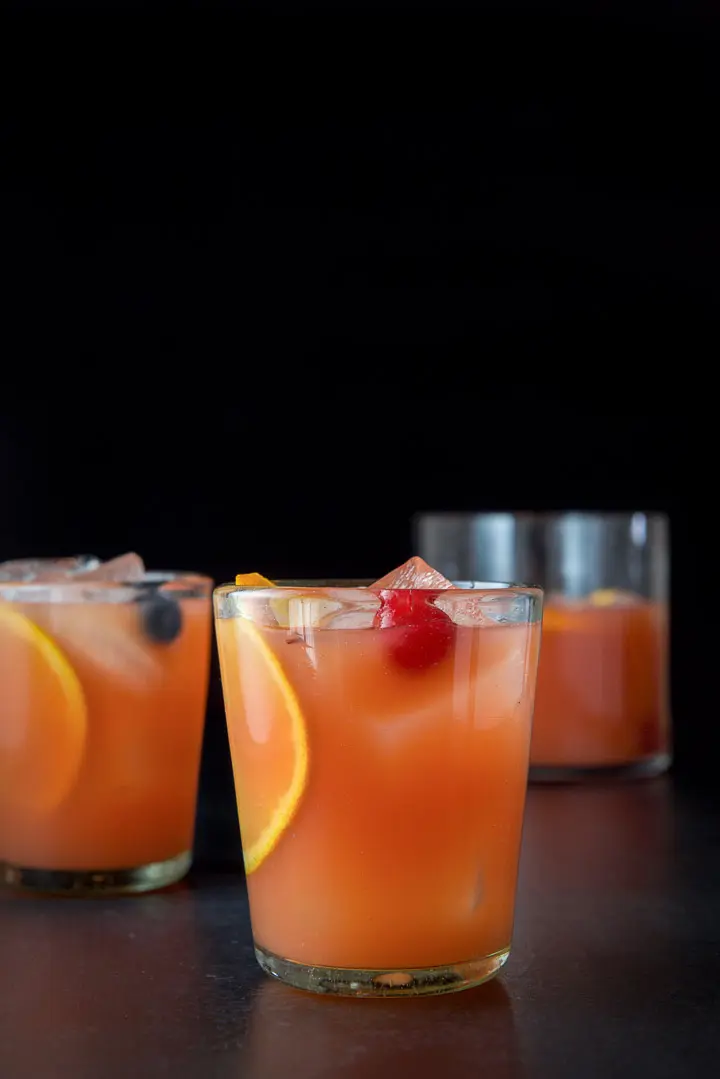
Cocktails made with rum
- Scorpion bowl (pictured above)
- Swizzle
- Mojito
- Daiquiri
Tequila
Tequila is made from the blue agave plant and was first created around the town of Tequila in the Mexican state of Jalisco. It is recognized as a designation of origin product, so real tequila can only come from specific parts of Mexico.
Tequila is classified as blanco, resposado, or añejo, depending on whether or not it is aged after distillation and for how long. Typically, it is distilled to 110 proof and then diluted with water to reach an ABV between 38-55% (76-100 proof). While it is often served neat with salt and lime, tequila has led to many famous cocktails, perhaps most notably in popular American food and beverage culture: the margarita.
If you’d like to learn more about tequila, read my complete guide here.
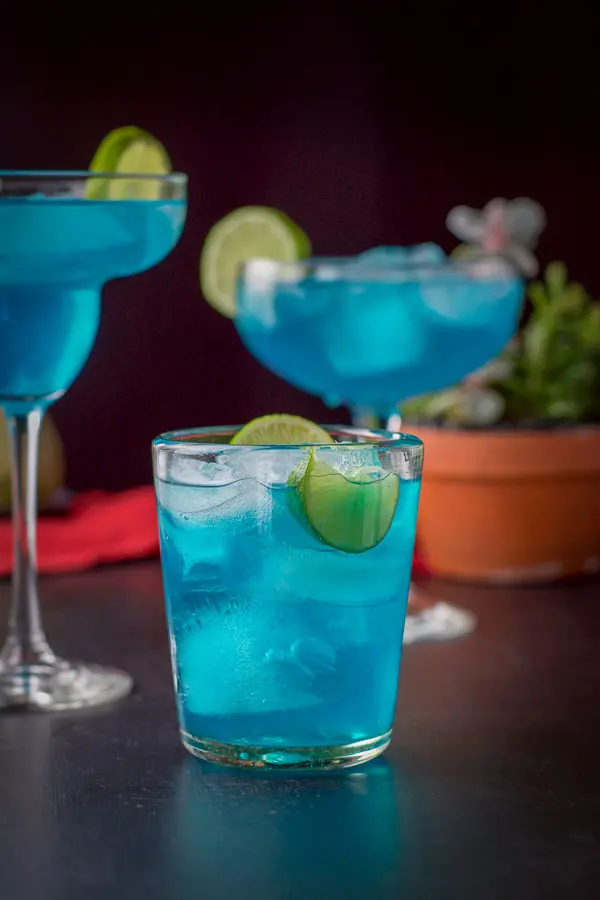
Cocktails made with tequila
- Blue margarita (pictured above)
- Cadillac margarita
- Jalapeño tequila
- Matador
Whiskey
Whiskey is a type of alcohol made from fermented grain mash. Grains such as corn, rye, barley, and wheat may be used, depending on the variety and sometimes the grain is malted first. Whiskey is usually aged in wooden casks and comes from around the world, but Scotland often claims to be the original creator of the spirit. Different whiskeys will be at least 40% ABV (80 proof).
If you’d like to learn more about whiskey, read my complete guide to whiskey, bourbon, and scotch here.
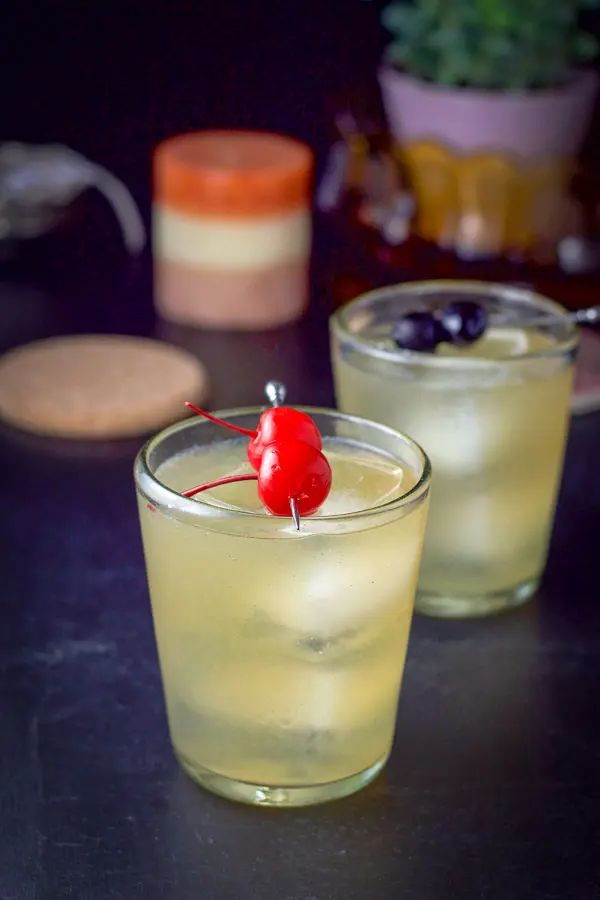
Cocktails made with whiskey
- Sour (pictured above)
- Smash
- Manhattan
- Captain crunch shot
Bourbon
Bourbon is a type of whiskey made primarily with corn and aged in new, charred American oak barrels. It can be made anywhere in the US but is most often associated with Kentucky and other areas of the South.
Bourbon must be made with at least 51% corn to qualify as the real product and be no more than 80% ABV (160 proof). Bourbon has no age requirement, but any bourbon aged less than four years must include an age statement on its label, and in order to carry the designation ‘straight,’ bourbon must be aged at least two years.
If you would like to learn more about bourbon, ready my complete guide to whiskey, bourbon, and scotch here.
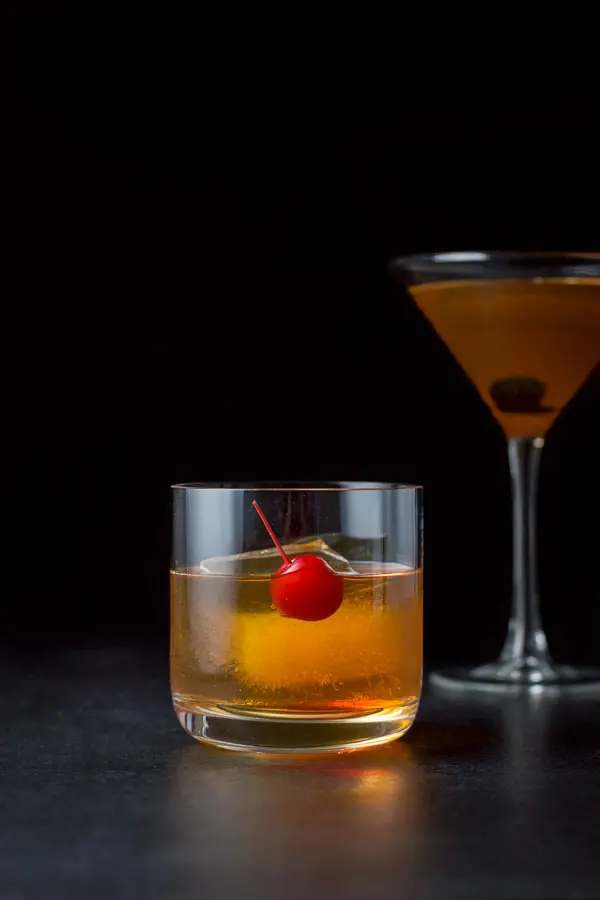
Cocktails made with bourbon
- Manhattan (pictured above)
- Cherry bourbon
- Sour
- Cranberry cocktail
Optional spirits
In addition to the base spirits listed above, several others are well worth having in your home bar, especially if you enjoy them.
Baileys Irish Cream
Bailey’s Irish Cream is a cream liqueur from Ireland that blends cocoa, cream, and Irish whiskey. It is the original Irish cream liqueur, but the brand now offers a variety of flavors and there are many similar products on the market. With an ABV of 17%, Bailey’s isn’t as strong as vodka or gin.
Cocktails made with Baileys Irish cream:
Kahlúa
Kahlúa is a Mexican coffee liqueur made with rum, sugar, and Arabica coffee. It has been in production since the 1930s and is usually around 20% ABV. It is popular in lots of cocktails, and it is frequently used in desserts or in toppings for desserts, like cheesecake.
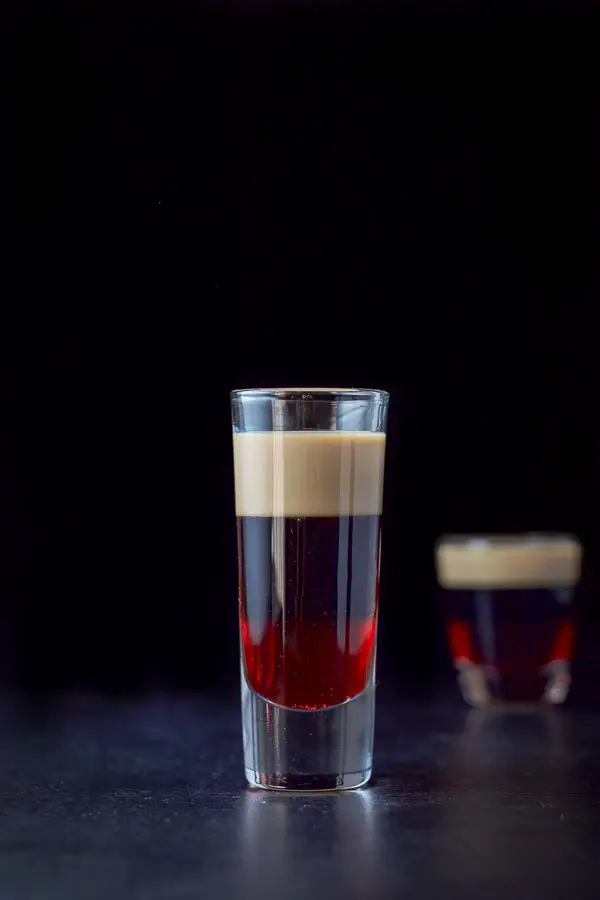
Cocktails made with Kahlúa:
- Chocolate covered cherry shot (pictured above)
- Butterfinger shot
- Black forest cake shot
Cointreau
Cointreau is an orange liqueur. It was used originally as an apéritif and a digestif (drink before and after a meal). It is now best known as an ingredient in lots of cocktails, including famous ones like the margarita and the cosmopolitan. It is 40% ABV (80 proof).
Triple sec is a lesser quality orange liqueur that can be substituted for Cointreau in many cocktail recipes.
Cocktails made with Cointreau:
Grand Marnier
Grand Marnier is a premium orange-flavored liqueur from France made with Cognac brandy, bitter oranges, and sugar. It is 40% ABV (80 proof) and can be enjoyed neat (straight up) or on the rocks. Like Cointreau, Grand Marnier has also become a well known ingredient in cocktails and even in some dessert recipes, such as crêpes Suzette.
Cocktails made with Grand Marnier:
Creme de cacao
Creme de cacao is must-have spirit for chocolate lovers as it is a chocolate-flavored creme liqueur. Creme liqueurs are characterized by their high sugar content; they do not contain real cream. The ABV varies between brands but is usually around 20-25%.
As well as being a digestif and a popular ingredient for cocktails, creme de cacao is often used in desserts. It comes in a dark version and a clear version.
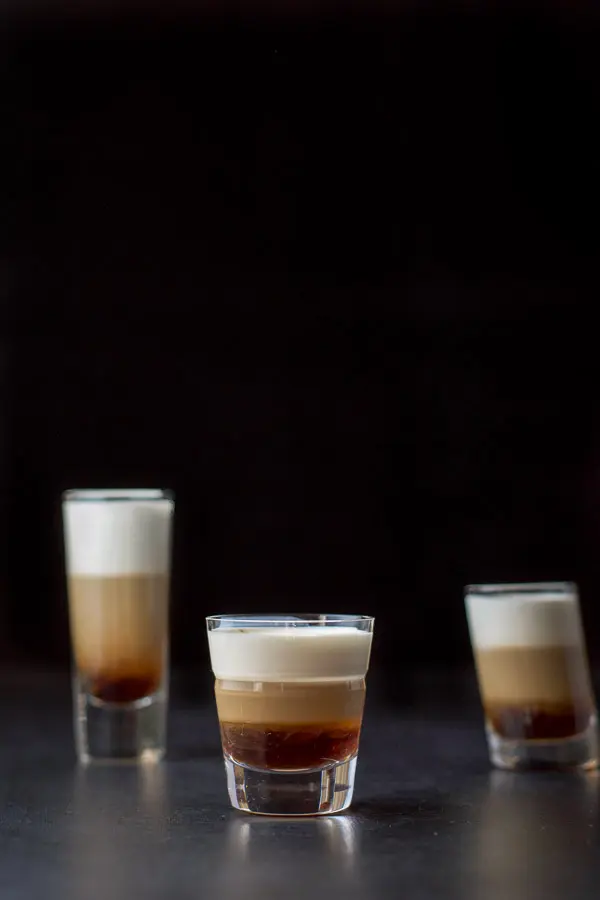
Cocktails made with creme de cacao:
- Tootsie Roll shot (pictured above)
- Almond Joy cocktail
- Brandy Alexander
Chambord
Chambord is a raspberry liqueur based on a style of drink made in 17th Century France. It combines both black and red raspberries as well as citrus peel, Madagascan vanilla, and honey. Its alcohol content derives from cognac. It comes in a distinctive, ornate, small, round bottle, so Chambord looks very stylish on the home bar!
Cocktails made with Chambord:
Midori
Midori is a distinctive, bright green colored liqueur made from melons. It was only made in Japan until the late 1980s, when production started elsewhere. The word ‘midori’ means ‘green’ in Japanese and it is brilliant for cocktails as the color makes for very eye-catching drinks.
Cocktails made with Midori:

Amaretto
Amaretto is one of many brands of almond liqueur. It tastes a little like liquid marzipan. Amaretto is enjoyed neat, on the rocks, or in mixed drinks and cocktails. One of the best known brands is Disaronno, which comes from Italy. Amaretto is also used in desserts.
Cocktails made with Amaretto:
Other useful ingredients for mixed drinks and cocktails
- Bitters – An alcoholic preparation infused with botanicals that render it bitter or bittersweet, bitters come in many different flavors. The most popular flavor is labeled ‘aromatic.’ The old fashioned cocktail usually has bitters in it. Popular bitters brands are Angostura and Peychaud.
- Dry vermouth – Made of grapes, dry vermouth is technically a fortified red wine (alcohol added) and is not considered a spirit. The martini calls for dry vermouth.
- Sweet vermouth – Also made from grapes, this vermouth is sweeter than the dry version. It also has a red color and originates from Italy. It is used in the Rob Roy.
- Ginger beer – Traditional ginger beer is a sweetened, carbonated, usually non-alcoholic beverage created from the natural fermentation of prepared ginger spice, yeast and sugar.
Mixers
These are non-alcoholic ingredients added to mixed drinks and cocktails. The main purpose is to dilute the alcohol by volume, but they also influence flavor.
Here is a list of mixers:
- Tonic water
- Club soda
- Ginger ale
- Juices: pineapple juice, orange juice, tomato juice, etc.
- Grenadine
Essential bar tools
In addition to prioritizing and purchasing your base and optional spirits, you will also need a few essential tools to complete your home bar. The following list includes those tools that are easy to find and most helpful to have on hand. As your mixology becomes more sophisticated, you will probably want to add others, too.
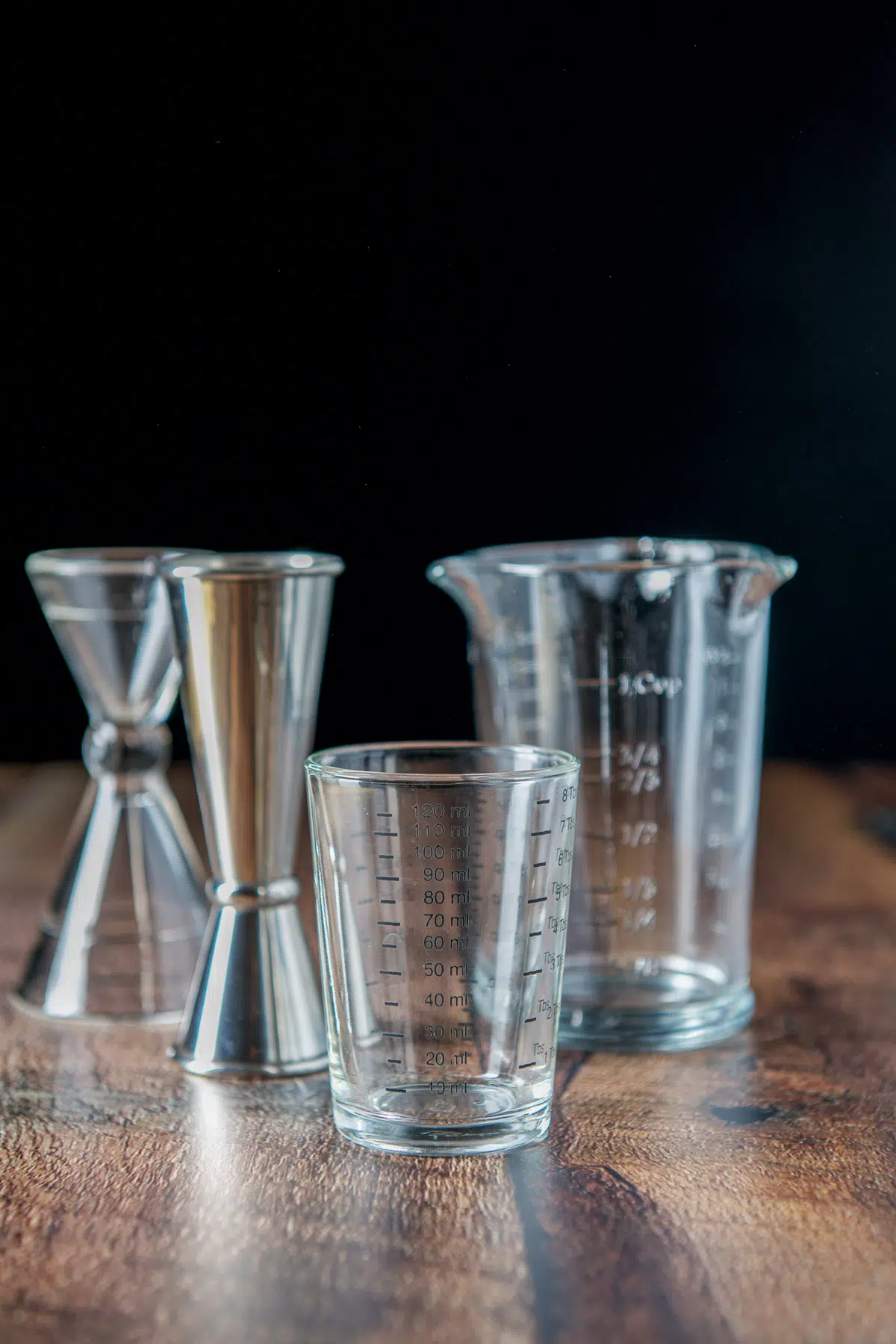
Measuring glass or jigger
While mixing a simple drink doesn’t always need a measured approach, if you are making a cocktail, then ingredient ratios are important. There are two main tools to measure ingredients.
A jigger is a simple measure that often contains two sides – one side is equivalent to a single shot (usually 1 ounce or 30ml) and the other is equivalent to a double shot (usually 2 ounces or 60ml). Easily measure any ingredient by filling a side and tipping the contents into a glass or shaker. (The standard shot glass can also be used in this way.)
A measuring glass is more sophisticated because it provides a range of measurements along its side. This glass can be used in two ways: either to measure and add ingredients into a cocktail shaker before shaking and pouring into the glass or to measure and add ingredients directly into the serving glass before simply stirring them and adding a garnish. This latter method is also referred to as “building the drink in the glass.”
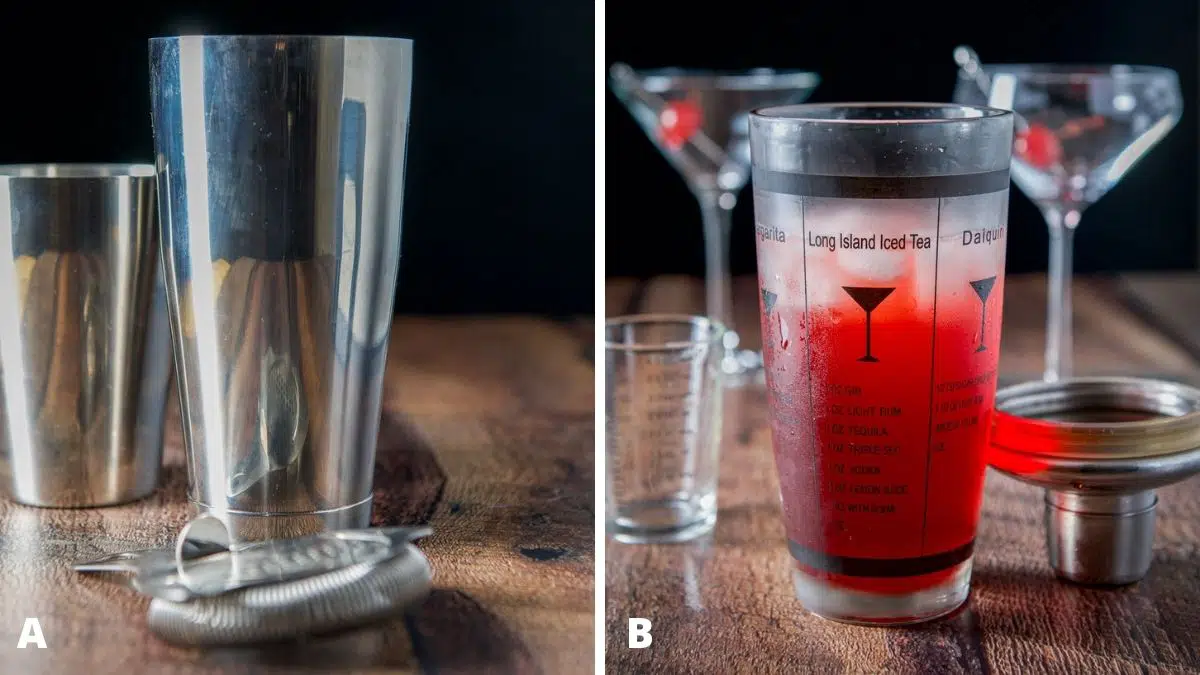
Shaker
No home bar is complete without a cocktail shaker and you will make most of your cocktails in one. There are various types and styles but generally, they feature two or three parts.
On the left is the type of shaker you see in restaurants or bars. It has a large bottom receptacle, a smaller receptacle that you wedge mouth-to-mouth into the bottom piece to shake the contents, and a separate strainer to pour the liquid in the glassware. (A)
On the right (B) is the shaker I use almost all the time. Its clear glass allows me to show how the liquid increases and changes as I combine ingredients.
To the right of the shaker, you can see, upside down, the top with its built in strainer and, underneath that, the cap.
Once I finish adding the ingredients, I cap the top, secure it to the shaker, shake holding both bottom and top, and then remove the cap to strain the liquid between the glasses.
Alternately, you can buy a mixing glass, which is similar to a shaker but it doesn’t have a top or strainer. To use it, add ice to the glass, add the ingredients, use a cocktail spoon to stir the ingredients, then pour into the glasses.
Even though I own a mixing glass, I prefer to use the cocktail shaker and act as though it’s a mixing glass. If I’m making a big batch of cocktails, I’ll use an 8-cup bowl.
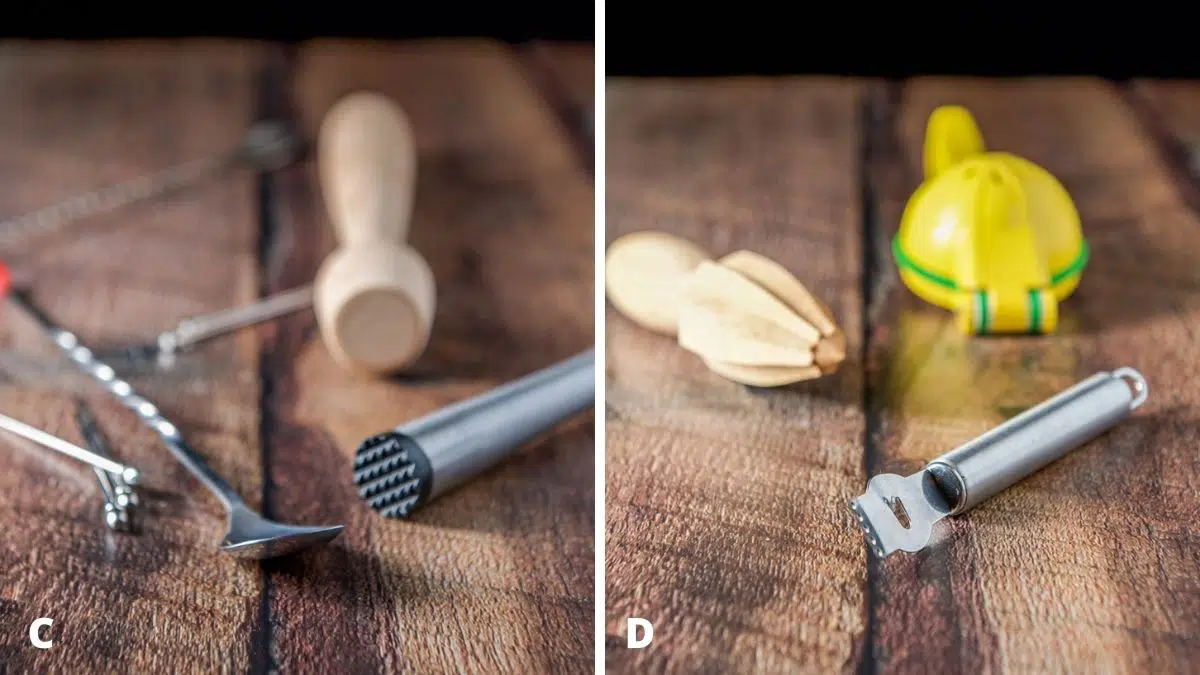
Cocktail spoon (C)
A cocktail spoon, also known as a bar spoon, is a special spoon with a very long handle that is used to mix drinks in even a tall glass. It comes in plain and ornate styles but looks a lot like a latte spoon with a longer handle.
Muddler (C)
The muddler is crucial for drinks such as the mojito where you need to crush or muddle ingredients to release their flavors and oils without going to the lengths of a blender or food processor. Muddlers come in wooden and metal versions and have an end a little like a meat hammer.
Martini picks (C)
Martini picks are a bit like an upgraded, pretty version of the toothpick. They are used to hold things like olives and cherries that garnish many drinks. Some are quite plain while others feature ornate ends, and all are made from metal, so they are washable and reusable.
Citrus squeezer (D)
Many drinks call for fresh citrus juice, lime, and lemon in particular. And while bottled versions are okay in a pinch, I prefer and always recommend fresh juice for the best-tasting cocktails. This becomes even more important when using premium alcohol.
The citrus squeezer – that yellow and green contraption in the back – is my go-to tool for juicing quantities of fruit quickly. Click here to see how to use it.
Also on the table is a wooden citrus reamer. To use it, cut the citrus in half, place the point of the reamer into the flesh of the fruit, and twist the handle until all the juice is expelled.
You can also use a standard manual citrus juicer (not pictured) that has a bowl for collecting liquid from the reamer.
Channeling knife (D)
A channeling knife is a small gadget that is used to create twists and to obtain zest from the skin of different fruits. It is most often used on citrus fruits, like lemon and lime, which are called for to garnish or to add extra flavor to many mixed drinks and cocktails.
Large square ice cube tray
You can use any type of ice in drinks but a large square ice cube tray is the perfect option for making cubes that take longer to melt and therefore don’t water down your cocktail creations as quickly as smaller cubes. Usually, one ice cube per drink is enough, but I’ve been known to use two if the glass if large enough.
Glassware (at least two of each)
The final component to establishing your home bar is something to put those drinks into! Glassware comes in all shapes and sizes but there are a few key types you’ll want to think about having handy, depending on the drinks you’ll be making.
One of my favorite places to buy glassware is Crate and Barrel. A lot of the drinks I showcase on this blog are shown in glasses I purchased from their store.
Red wine
While there are a few variations, the basic red wine glass is the largest of the wine glass styles and typically has a bowl shape. The idea is that you don’t fill them more than one-third full, so the bouquet of the wine can be savored in addition to the wine’s complex flavors.
White wine
Likewise, with white wine glasses, there are many variations but the basic style has a taller, more U-shape bowl than the red wine glass. White wines don’t need aerating in the same way as reds, and the glass’s slimmer shape helps to keep the wine cool. Aim to fill it no more than two-thirds full.
Champagne
Champagne flutes are the most slender style of wine glass with tall sides and a narrow profile. They have a stem and can come in different sizes. The shape is designed to preserve carbonation and keep the liquid true to its nickname, “bubbly.”
Doubled old fashioned
An old fashioned glass is also known as a lowball or rocks glass and a doubled version is simply larger. Typically it will hold 12-16 ounces versus the 6-8 ounces of a standard old fashioned glass.
Highball
The highball glass is wider and shorter than the Collins glass but taller than a standard old fashioned glass. It is a common sight for mixed drinks and for cocktails of 8-12 ounces.
Martini
The martini glass is named for the martini cocktail and is sometimes known simply as a cocktail glass. It has a conical bowl shape and comes with stems of many different styles. There are also different sizes available.
Margarita
Another glass named for a classic cocktail, the margarita glass typically has a broad, shallow bowl with upright sides, although there are lots of variations. The wide rim makes it ideal for external garnishes like salt and sugar.
Tom Collins
The Tom Collins or Collins glass is one of the taller glasses available and holds around 12 ounces, sometimes as much as 14. Cylindrical and quite narrow, the Collins glass is ideal for cocktails with lots of fancy garnishes.
Stocking Up
In my experience, the best way to stock your home bar is one drink at a time. There’s no need or rush to buy everything at once, and you will be surprised how quickly your collection can grow even if you only purchase the spirits, supplements, tools, and glassware you need to mix the next cocktail on your menu. Be patient, experiment, expand your repertoire to help expand your collection of home bar essentials, and enjoy the process.
I hope you found this home bar essentials article informative and useful. Leave me a comment to let me know how you have stocked your home bar or to ask me questions. I love to share my knowledge and experience of bartending, cocktails, and spirits.
From lighting up stages with her BA in theater to food journalist, Elaine Benoit's journey is a testament to passion's transformative power. As the CEO of Dishes Delish, she offers a blend of healthy, comforting recipes and exquisitely crafted cocktails. Beyond the kitchen, Elaine voiced her culinary adventures on her podcast, "Dishing," and co-owns Food Blogger Help, extending her expertise to guide budding food bloggers to success. Whether it's for a heartwarming dish or insights into food blogging, Elaine's diverse experiences make her a beacon in the culinary digital landscape.


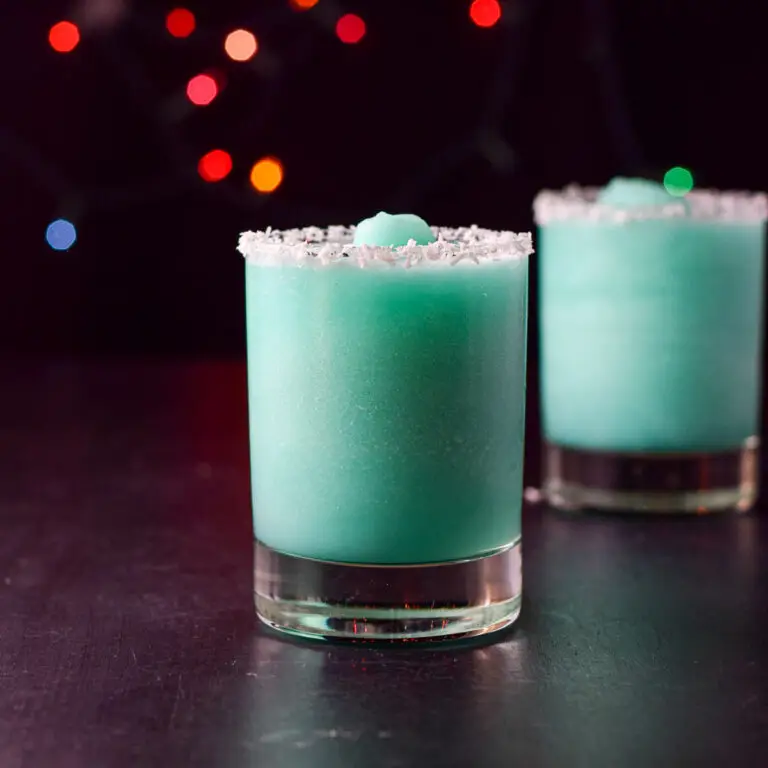
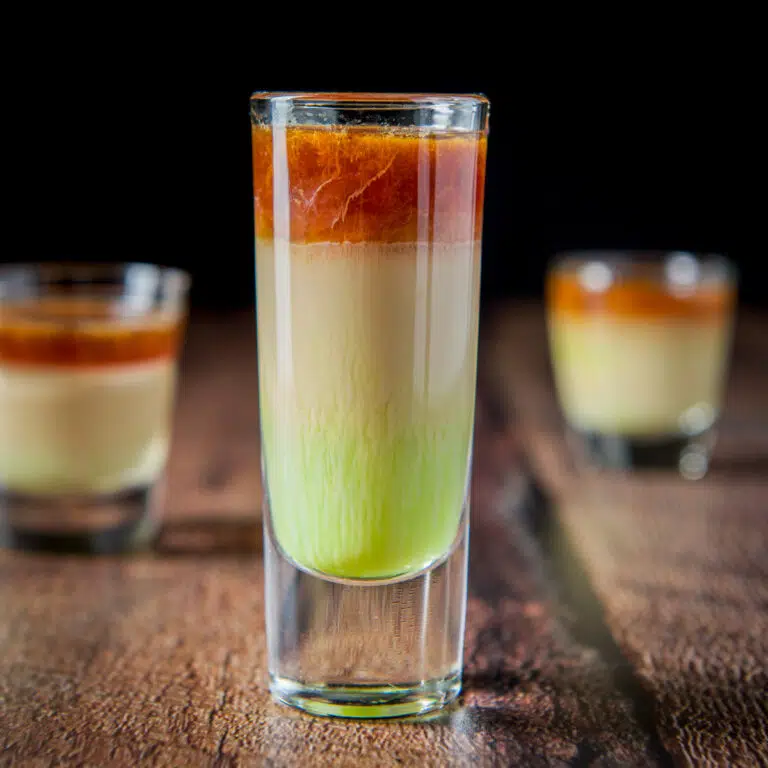
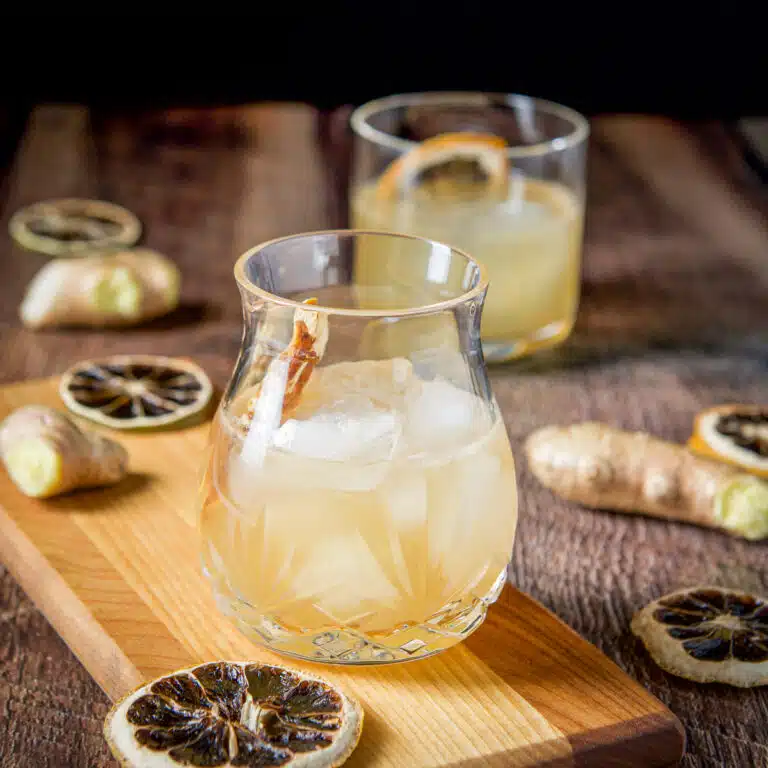
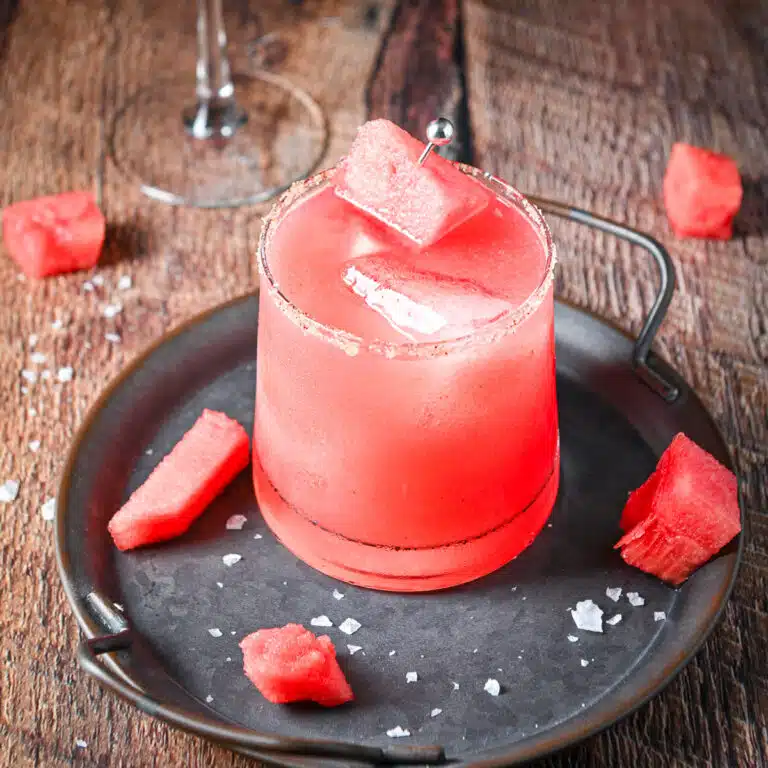
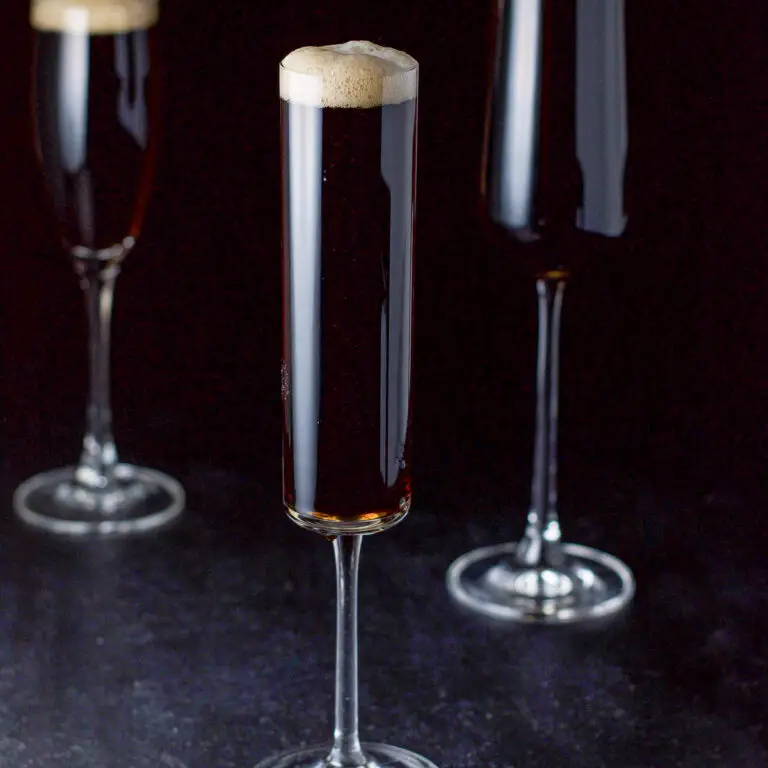

How fun! I really enjoyed reading this and I’m happy to say that although I have a lot of the liquor you mention, I can’t wait to get the varieties I don’t have. Thanks for writing this.
I’m so glad you enjoyed the article! Thanks for letting me know.
Wow! This is the most comprehensive guide that I have found! Just what I need to start my setup!
Thanks so much Beth! I appreciate it. Good luck on your home bar!
This is fabulous thank you! I literally just bought my husband a bar cart for his birthday and he needs some guidance so I’ll be sending this straight on to him. So helpful!
Thanks so much, Gabby! I love that you got him a bar cart!! 🙂 I should get one too for the alcohol I use the most!
Excellent article, I have all the tools and many glasses. Now I have to stock up on the alcohols. I was planning to move my bar cabinet into the office to create a “sigar” room but I am concerned that it is too far from the kitchen and I would need a sink. What do you think?
I don’t believe you need a sink, Laura. You just have to be a little more thoughtful before you make a cocktail. I find an ice bucket in those situations as a great addition. And thank you, I appreciate it! 🙂